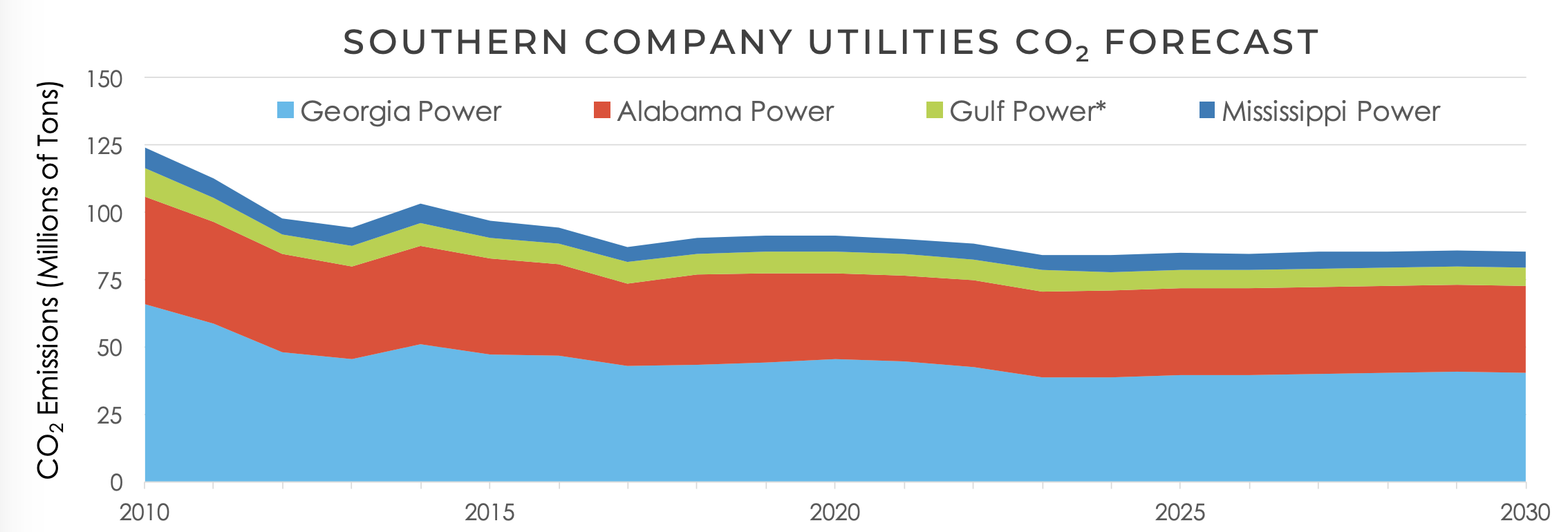The Southern Alliance for Clean Energy (SACE ) has observed that, lately, many utilities are saying one thing, yet doing another. Utility doublespeak isn’t anything new. For example, last year Southern Company (the second largest utility in the U.S.) issued its low-to-no carbon pledge with great fanfare. This year Georgia Power (a subsidiary of Southern Company) admitted: “These goals do not change Georgia Power’s Integrated Resource Plan (IRP) planning process and did not influence the target amount of renewables proposed.” AKA, we see the goals, but we won’t be going out of our way to pursue them. We hope Duke Energy is sincere about their comparable “net zero” commitment; but their current plans indicate an incompatible pathway. And, as we recently pointed out, the Tennessee Valley Authority (TVA) is deliberately misleading the public about their real plans for implementing renewable energy into its energy resource mix.

Not wanting to be left out, it seems Alabama Power is in on the deception, too. The utility recently filed a request with the Alabama Public Service Commission (PSC) for a Certificate of Convenience and Necessity to:
- Build a new combined-cycle natural gas plant,
- Buy an existing combined-cycle natural gas plant,
- Enter into a power purchase agreement (PPA) from an existing combined-cycle natural gas plant, and
- Enter into a similar PPA for up to 400 MW of solar from five facilities.
Clearly Alabama Power wanted to proactively smooth over the negative reaction to the three gas plants that it would inevitably receive by packaging those together with a significant solar development plan. The gas and solar bundle worked, as shown by a few sample headlines.
- Alabama Power moves forward on solar & storage
- Alabama Power adding gas, solar to meet winter demands
- Alabama Power plans new gas plant, added solar capacity

The deceptive part of this maneuver is that this solar capacity was actually approved four years ago. In September 2015, an order from the Alabama Public Service Commission (PSC) authorized Alabama Power “to develop or procure up to 500 megawatts of capacity and energy from renewable energy and environmentally specialized generating resources.”
SACE had already incorporated this previously announced solar capacity into our forecast for Alabama Power before our first “Solar in the Southeast: annual report released in 2018 and then again in our more recent update, that was published in Spring of this year. So this news about new solar coming from Alabama Power? It isn’t anything new. It’s just another example of a utilities deceiving the public into thinking that it’s a leader in renewable energy procurement and decarbonization.
Don’t get us wrong. We’re pleased that Alabama Power is finally advancing its 2015 renewable energy authorization. Although we are surprised it took Alabama Power four years to announce the 400 MW portfolio of solar projects, this “new” announcement of solar will be a welcome addition for its customers.
Considering all the change that is needed for Alabama Power to do its part to meet Southern Company’s low-to-no carbon commitment, it is disappointing to see the prior initiative recycled for a new round of positive press to mask what may be a poor decision to add more gas plants to their customer’s bills. Solar’s attractive by itself; and it doesn’t make fossil gas smell any better.



